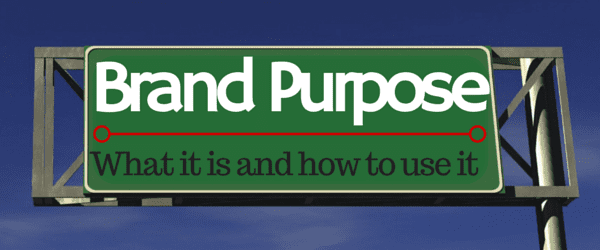Have you ever read a book only to reach the final chapter and feel utterly disappointed? Or left the cinema…
Read MoreBrand Purpose: What it is and how to use it

The branding platform has changed so many times it’s hard to keep track, but one of the biggest developments is “Brand Purpose”. Gone are the days when brands could sell you a product and leave it at that. Brands now have to feel, think and do things about the greater wide world to stay ahead of the pack, as consumers can pick and choose between brands that can relate to on a personal level and those that they don’t. The ever expanding range of platforms content is delivered on has also added to this, meaning that it’s less and less often that consumers are forced to consume any kind of advertising (ad breaks on television, for example), but choose exactly what they want to see and hear.
The new, active and connected consumer breaks into 3 categories, the first looking to be entertained, the second to connect and the third to get information. A brand purpose can focus on any of these but ideally should branch across all of them.
But what can establishing and conveying a solid brand purpose do for your product and company?
Purpose breaks through this myriad of choice and gives consumers a reason to pick your brand over any other and sets you apart from your competitors.
On the whole, 42% of the time consumers buy the brand that engages with their interests and concerns over the brand that simply sells you their product and not their ideals.
Red Bull has had great success marketing themselves as not just a drink, but a brand who has a deep interest in extreme sports. They cover, sponsor and run over 100 across the globe, giving them that special edge when it comes to connecting with their audience – they have a passion other than their product.
3 in 4 new age consumers share a brand that connects with their interests with everyone around them. This is almost the entire basis of viral ads – no one shares them because of the brand they’re connected with, but because the ad itself creates content and interest outside of any product being sold. This relates to those seeking to be entertained.
Brands that can give you a feeling of having quite a deep and experienced relationship with them, whether that be of the product itself or the associated purpose, are always the winner when it comes to the check-out. This can be as simple as bringing people’s passions to life through the product you’re offering.
A good example of this is Maybelline’s current slew of tutorial videos featuring models and professional makeup artists. Maybelline are tapping into people’s passions for beauty and do-it-yourself, as well as getting advertising space by using their own products. Whilst this does seem like a really obvious connection to make, it puts them ahead of brands who simply push you to buy. By supplying free content and tutorials, they help the average person achieve the model look at home and further indulge in do-it-yourself beauty. In short, their brand purpose is basically “helping you beauty better” (that’s not their slogan, but it totally should be).
As important as brand purpose is however, you need to be careful not to force an ideal onto a product or brand where it clearly doesn’t fit. Additionally, vague statements that seem to promise a lot but deliver little (such as “Making The World a Better Place”, how exactly are you doing that? By making lots of money?) can come across as insincere.
Consumers are looking for more out of their brands than just a product pushed into their hands (rhyme unintentional), and it’s a definite business plus for you to try and deliver that.



